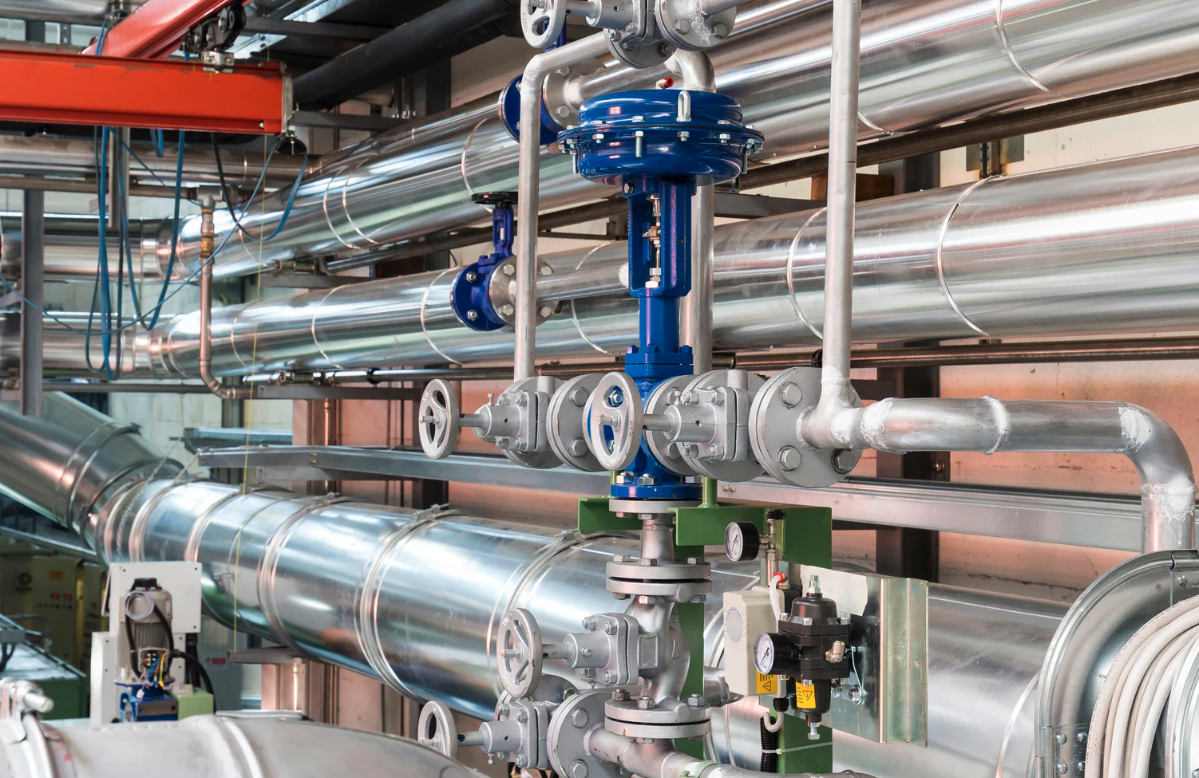Guideline on Pneumatic Valves: Definition, Types, Usage
by Quotebeam Team
Apr 24, 2024

Pneumatic valves serve as critical components within industrial automation, facilitating the controlled release, direction, and regulation of compressed air in pneumatic systems. This blog aims to provide a thorough understanding of pneumatic valves, covering their definition, the array of types available, and their ubiquitous applications across diverse industries.
What are Pneumatic Valves?
Pneumatic valves, at their core, are mechanisms engineered to manage the flow of compressed air within pneumatic systems. Operating as essential conduits, they dictate the distribution of pressurized air to various components, enabling precise control over machinery, tools, and processes. Whether it's directing air to actuate a cylinder or halting airflow to cease operation, pneumatic valves are instrumental in orchestrating the functionality of pneumatic systems across industries such as manufacturing, automotive, aerospace, and beyond.
How Does a Pneumatic Valve Work?
The operational principle of pneumatic valves hinges on a blend of mechanical ingenuity and pneumatic dynamics. When prompted into action, often through electrical signals or manual manipulation, these valves undergo a choreographed sequence of movements. This sequence involves the strategic opening or closing of internal passageways within the valve assembly, thereby either permitting or obstructing the flow of compressed air. Through this elegantly simple mechanism, pneumatic valves bestow pneumatic systems with the agility and precision necessary for tasks ranging from basic actuation to intricate motion control and automated processes.
Advantages of Using Valves in Pneumatic Systems
Incorporating pneumatic valves into pneumatic systems offers a range of tangible advantages. Chief among these is their unparalleled responsiveness, marked by rapid reaction times that enable instant adjustments in airflow. Additionally, pneumatic valves exemplify durability and reliability, boasting robust constructions capable of enduring the challenges of demanding operational environments and prolonged usage. Furthermore, their inherent simplicity and ease of maintenance make them not only cost-effective solutions but also pillars of operational efficiency within industrial settings.
What are the Types of Pneumatic Valves?
The landscape of pneumatic valves encompasses a diverse array of types, each tailored to specific functions and operational requirements:
- Solenoid Valves: Solenoid valves are versatile components in pneumatic systems, utilizing electromagnetic coils to control the flow of air. When an electrical signal energizes the coil, it generates a magnetic field that either attracts or repels a plunger, opening or closing the valve. This rapid response time makes solenoid valves ideal for applications requiring quick on/off control, such as in automated machinery, HVAC systems, and irrigation systems. They come in various configurations, including normally open, normally closed, and dual-solenoid models, offering flexibility to suit different operational requirements.
- Directional Control Valves: Directional control valves serve as the navigators of airflow within pneumatic circuits, determining the path and direction of pressurized air. These valves feature multiple ports and internal passages, enabling operators to route air to specific actuators or components. With options for manual, mechanical, or solenoid actuation, directional control valves provide precise control over the movement of cylinders, motors, and other pneumatic devices. They find application in a wide range of industries, including robotics, manufacturing, and material handling systems.
- Proportional Valves: Proportional valves offer a sophisticated approach to airflow control, allowing for precise adjustment of flow rates and pressures. Unlike traditional on/off valves, proportional valves modulate airflow in proportion to an input signal, offering seamless regulation over a wide range of operating conditions. This level of control is invaluable in applications where precise motion control, force regulation, or pressure control is required, such as in automotive assembly lines, injection molding machines, and precision machining equipment. Proportional valves come in various designs, including pressure-control valves, flow-control valves, and servo valves, each optimized for specific performance criteria.
- Shut-off Valves: Shut-off valves serve as guardians of pneumatic systems, standing ready to halt the flow of air in emergencies or during routine maintenance procedures. These valves feature robust construction and reliable sealing mechanisms to ensure a tight closure when activated, preventing unintended airflow and maintaining system integrity. Commonly used in safety-critical applications such as compressed air systems, pneumatic tools, and process equipment, shut-off valves provide an essential layer of protection against air leaks, overpressurization, and other hazards. They are available in various configurations, including ball valves, gate valves, and butterfly valves, each offering distinct advantages depending on the application requirements.
Each type of pneumatic valve offers unique capabilities and advantages, catering to the diverse needs of pneumatic systems across industries. By understanding the characteristics and applications of these valves, engineers, and operators can select the most suitable options to optimize performance, reliability, and safety in their pneumatic systems.
